Growing Figs in the Midwest
Rodent protection in figs stored over winter
Winter protection for in-ground fig trees
Rooting Fig Cuttings in the Midwest
Rodent protection of fig plants stored over winter
By: Robin Guy
From the Grapevine December 2022
Potted Figs
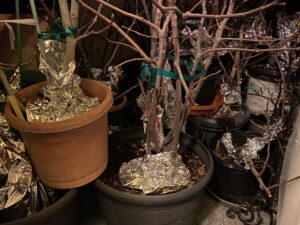
These are photos of my fig plants in storage in my attached garage for the winter. About five years ago, I stored them and a rodent family chewed off all of the stems down to the roots, and in some cases dug up the roots. I also lost all of the tags stating which variety was which, as the rodents didn’t care to leave those by the plant for me. I had a huge loss that winter. I tried aluminum foil as a deterrent, and it seems to work. My goal is to save the plant, not the entire tree/bush. I just wrap the base of the plant in aluminum foil and try to cover the soil also so that the rodents don’t girdle or chew the plant, or dig it up. I may cover a tender branch or two, but basically, it is just covering up the soil and base of the plant. I’ve been doing this for about 5 years already with great results. It takes a lot of foil and time, but it is good insurance.
===================================================================
Winter protection for in-ground fig trees
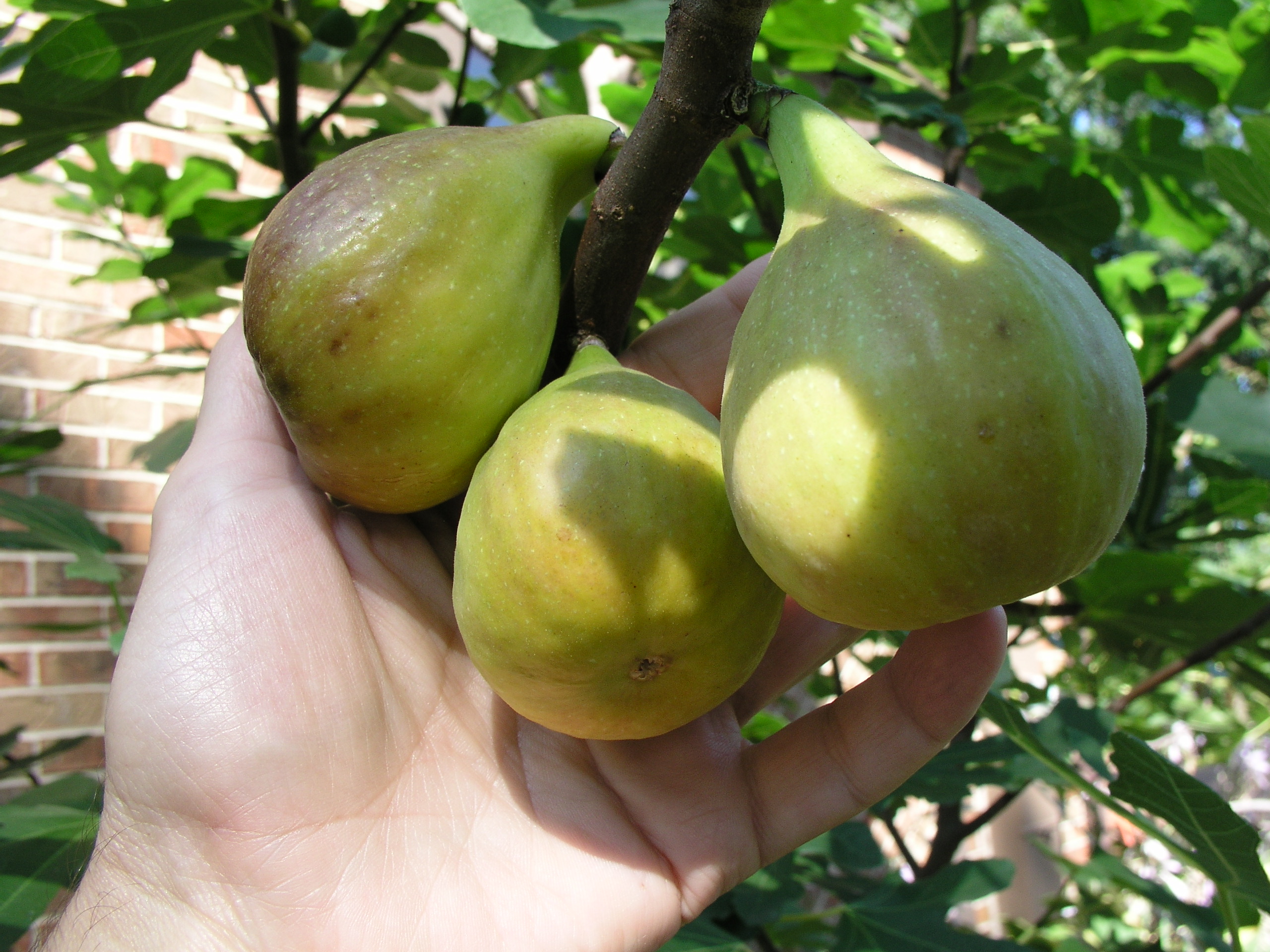
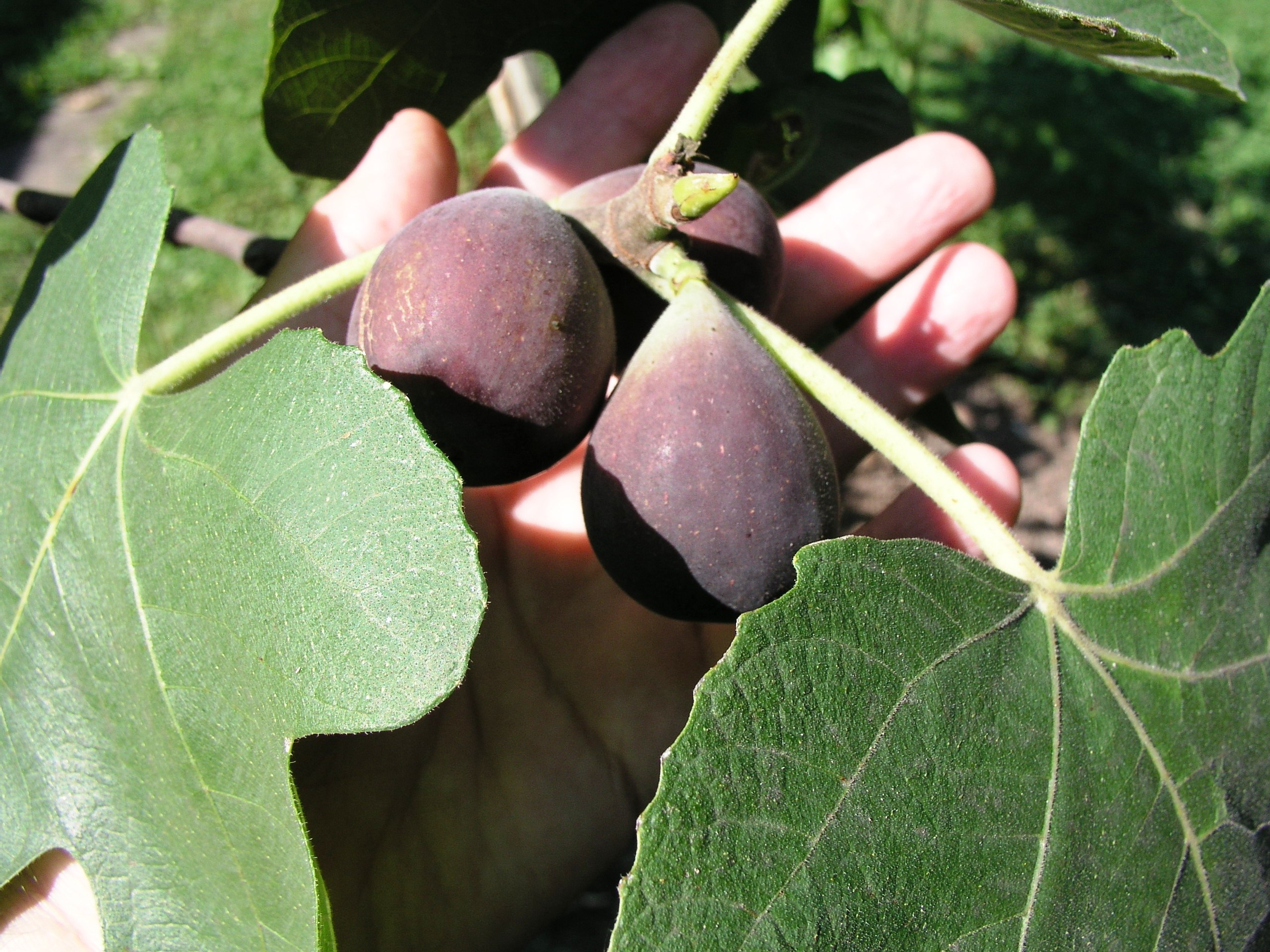
Fig trees usually grow in zones 7-10, so growing them in colder climates like ours in the Chicago area (zone 5) presents a challenge. The plants will not survive exposure to temperatures less than 15 degrees F for more than several hours, so growers must find a way of protecting them from lower temperatures.
One option is to pull the trees down to the ground. Fortunately, fig trees are very flexible probably because the trunk and branches have a latex core. As a result, the trees can, using some force, be pulled down quite close to the ground. Tie them in place to stakes in the ground, and then cover them with insulating material. Chopped or mulched leaves are an excellent choice for this. In November, pick up leaves from your property or get leaves from another source and bury the tied-down trees 18-24 inches deep in leaf mulch. Cover with a tarp and secure the tarp to the ground with bricks, stones, lengths of pipe, etc. Put some mouse poison blocks in containers near the edges of the covering tarps to deter mice or voles from eating the tree bark during the winter. In Spring, wait until risk of frost is gone (about mid-May) then uncover the trees, and stand them upright. They will quickly leaf out and begin to grow again.

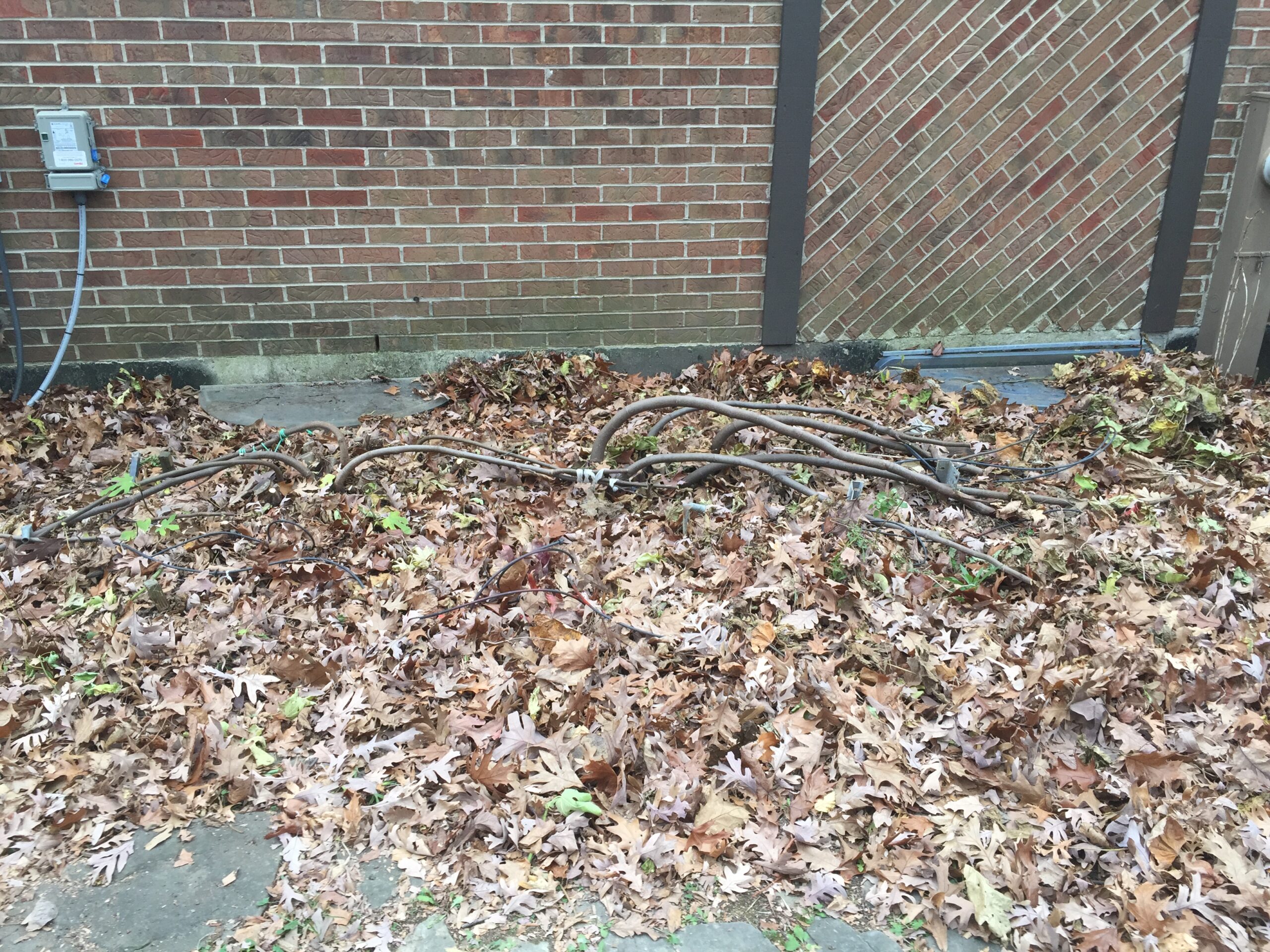
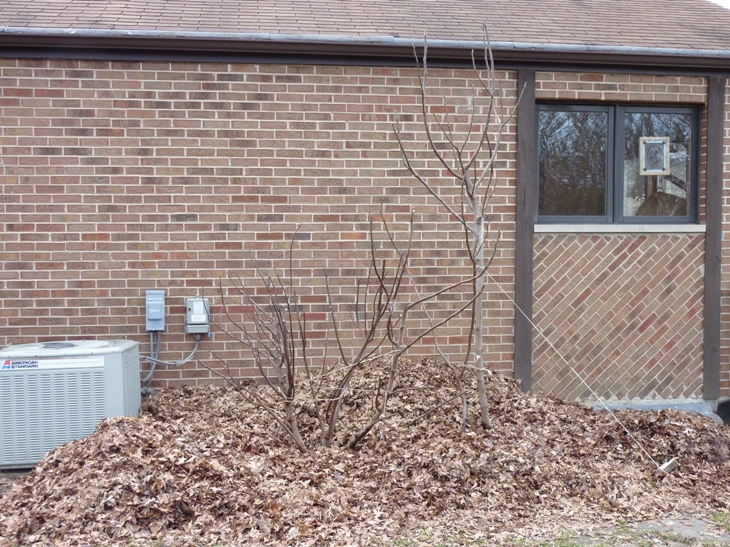
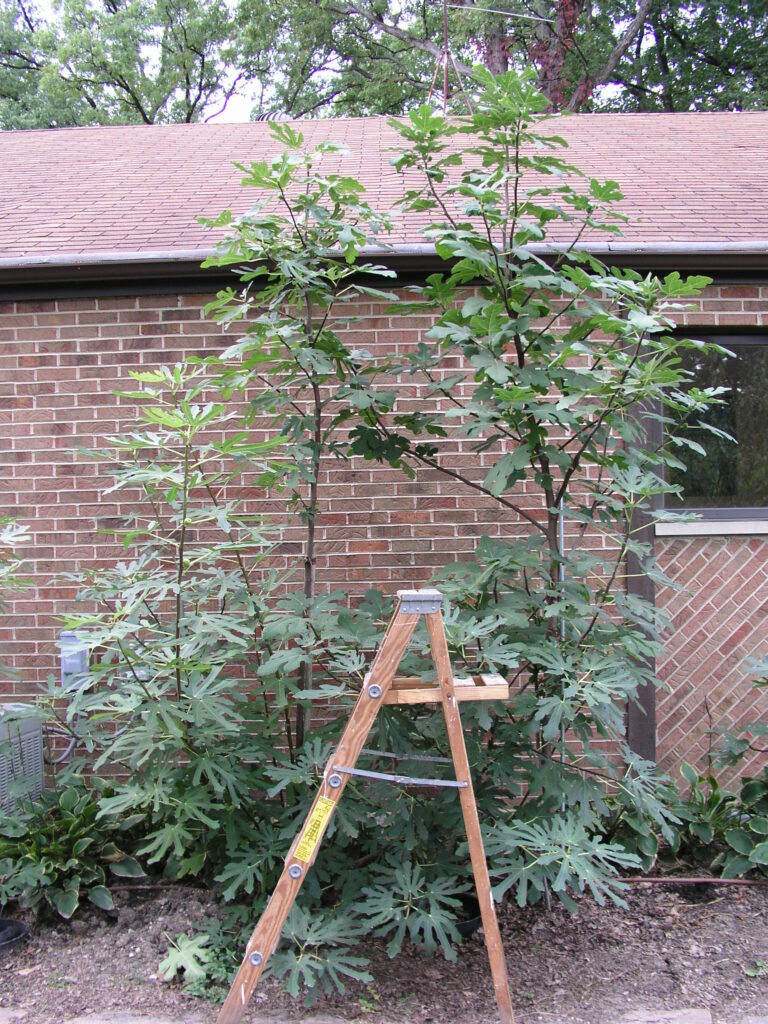
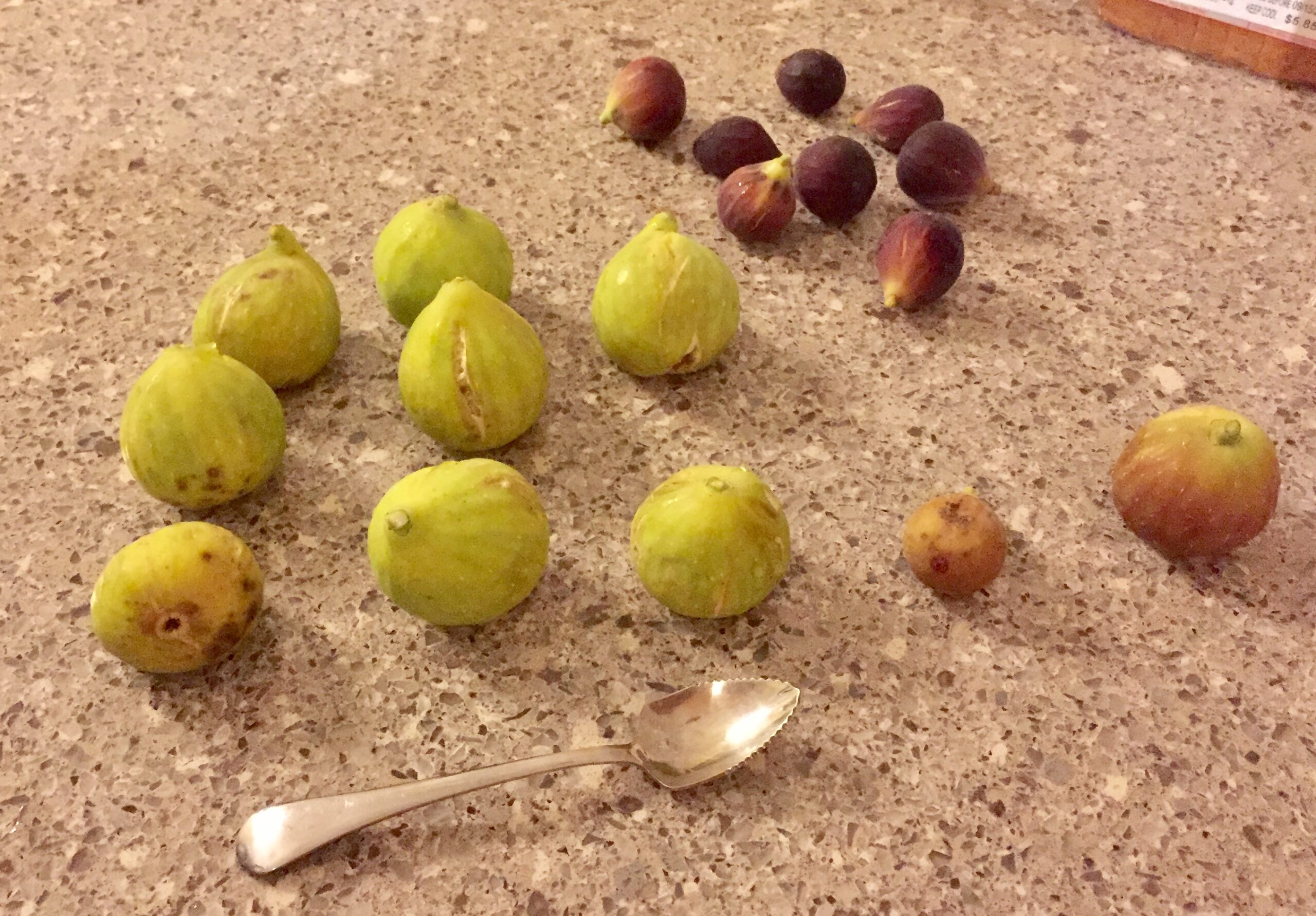
Air Rooting Fig Trees
There are a number of ways to proliferate fig trees, splitting apart a multi-trunk tree, rooting cuttings, layering, and air rooting. Air rooting is easy to do and can be used to cut out unwanted branches while producing new plants.
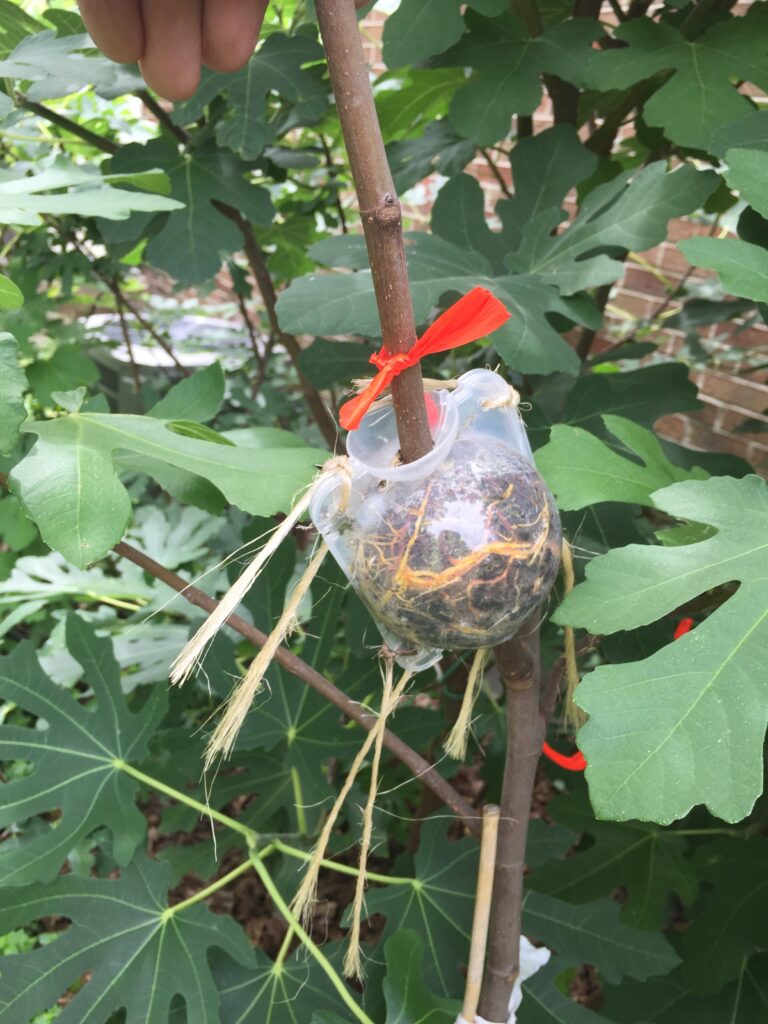
First, the fig branch can be girdled and a short segment (about 1″ wide) of bark completely removed. This is not necessary, but can speed up the rooting process if used. Then, a rooting ball or pod is filled with potting soil, perlite or vermiculite, and peat moss (1:1:1). The mixture is wetted thoroughly and then the ball is clamped onto the fig branch covering the girdled area. Check the ball every 3 or 4 days and add water as needed. After 6-8 weeks, a substantial mass of roots will be seen within the rooting ball. The stem is then cut just below the rooting ball. the plastic ball is opened up, and removed from the ball of roots. The root mass is then planted deep in a pot with a supporting stick to keep the new plant upright.
With some attention to the need for water, these rooted plants survive very well. Even fig fruits that had already started to form before the rooting began will often mature and ripen by the end of the same season when the air-rooted tree was potted.
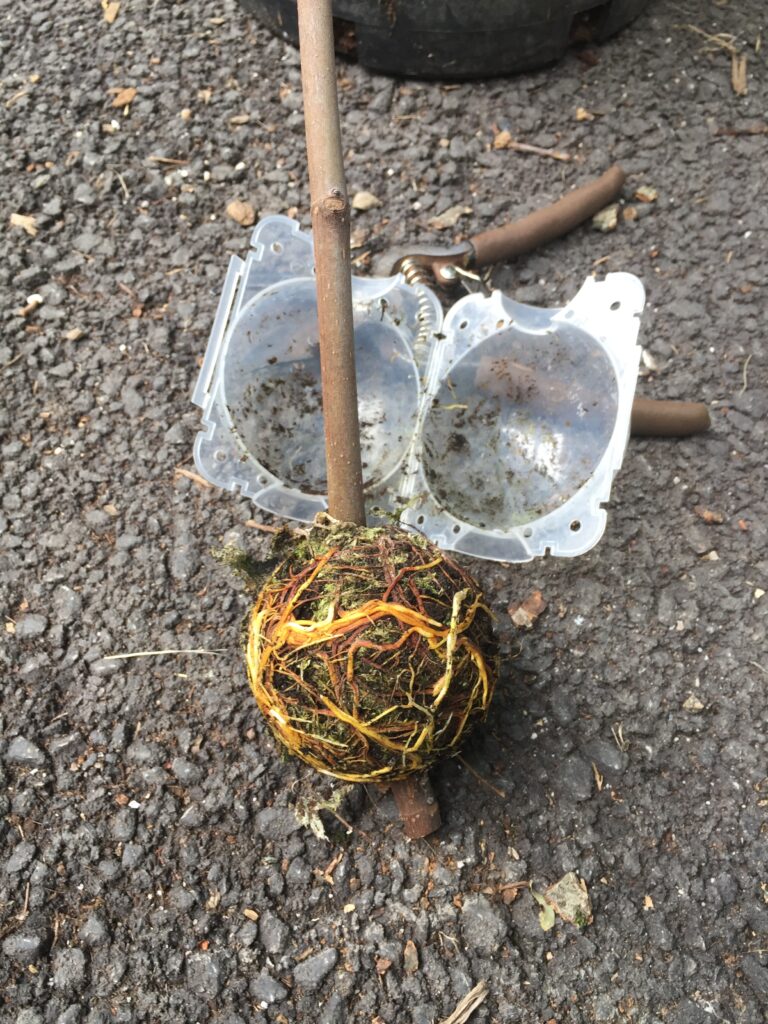
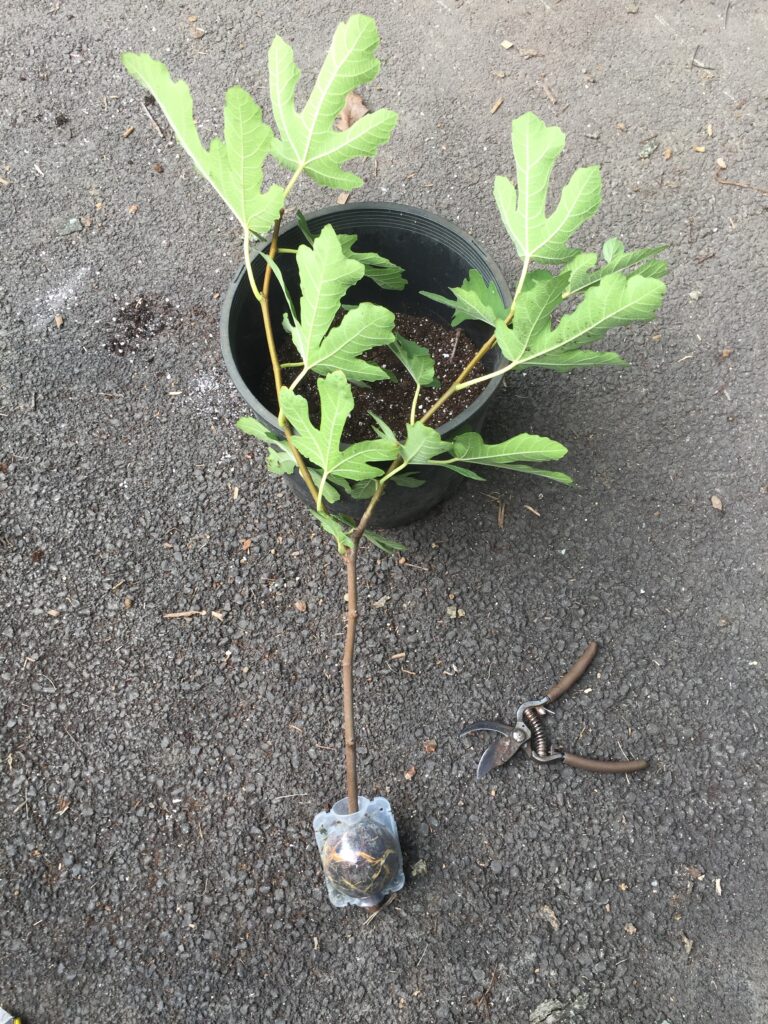
================================================================
Rooting Fig Cuttings in Zone 5 or Zone 6

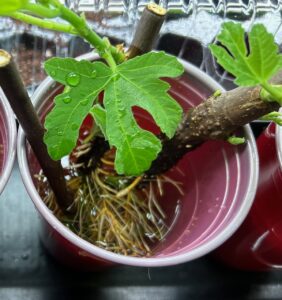
There are many ways to root fig cuttings. An online search will yield at least 20 detailed methods. In the past, I have tried several of these methods. I’ve found that the most reliable method is simply to root the cuttings in water. Here is how I do this:
- Wash the cuttings thoroughly in tap water and surface sterilize them by soaking them for a several minutes in 5% bleach (see **NOTE below). Rinse them thoroughly in water and nip 1/4” off the bottom of each cutting (Optional: Dust the bottom of the damp cuttings with rooting hormone). Place the cuttings bottom end down in a 12 ounce cup half-full of tap water. Put 4 or 5 cuttings per cup. Immerse only the bottom half in water. Thereafter, change the water daily and give it a sniff to see if it’s starting to stink. If so, find which of the cuttings is starting to rot and discard it. Rinse all of the rest of the cuttings in that cup and the cup itself thoroughly with running water to clean out most of the residual bacteria. Refill with water halfway and replace the cuttings. This should keep down the bacterial load so that the cuttings can resume growth. If you don’t do this, all the cuttings in that cup will probably rot.
- After doing this for a month, you should see many roots sprouting. They are still too fragile to survive planting them in media, so keep the cuttings in water for another month. During this time, provide the cuttings with sunlight or use Grow-lights. If leaves are a bit yellow, add some dilute miracle-grow type liquid fertilizer. Continue monitoring the water for smell to make sure that it’s not supporting bacterial growth. This will be much less likely at this stage, because the figs are growing steadily and they will inhibit bacteria by themselves.
- Once cuttings are thoroughly rooted at the end of two months, transfer them into a clean cup that has drain holes drilled in its base and gently add perlite until it covers the roots. Tap the cup a bit to get the perlite to settle and cover the roots well. Thoroughly water until water runs freely out of the holes and the perlite settles. Add perlite if needed to keep roots covered. Then keep the cuttings inside that cup for at least another month.
- If needed, add diluted liquid fertilizer. There is still no soil present, so the trees may need this. By the end of a month, you should have very well rooted figs. They rooted cuttings can be teased apart from each other and potted up in their own individual containers with 50/50 potting soil/perlite.
- In another month or so, add some more potting soil to the container or just repot in larger containers with more soil.
This method requires patience, but it addresses the 2 biggest causes of failure seen when rooting fig cuttings:
A.Fungal or bacterial overgrowth that kills the cuttings.
B.Potting up poorly rooted cuttings. When such cuttings are potted in soil or other media too soon, the fragile roots will break and the cuttings will die.
Of course, either failure is very discouraging. Using the method outlined above, the success rate for obtaining healthy, rooted fig trees is very high.
This method works well on cuttings that have been taken from dormant figs in late November or in December after frosts have occurred, leaves have dropped, and the temperatures have not yet fallen below 20°F.
Interestingly, when using this method and starting the rooting in December, January or February, I have picked ripened figs from some of the resulting little trees in early autumn of that SAME year. While this doesn’t always occur, the chances of getting edible figs from rooted cuttings in the following summer is very high.
**NOTE:
Regular-strength bleach is diluted 1 part bleach : 19 parts water to give 5% bleach.
Double-strength bleach is diluted 0.5 parts bleach : 19.5 parts water to give 5% bleach.
Routinely, 10% bleach for 15 minutes is standard to sanitize or surface sterilize for many biomedical purposes. To reduce the chances of damaging the fig cuttings, decrease the time to 10 minutes and concentration by half. At higher concentrations or longer times, the cuttings may be damaged.
==================================================================